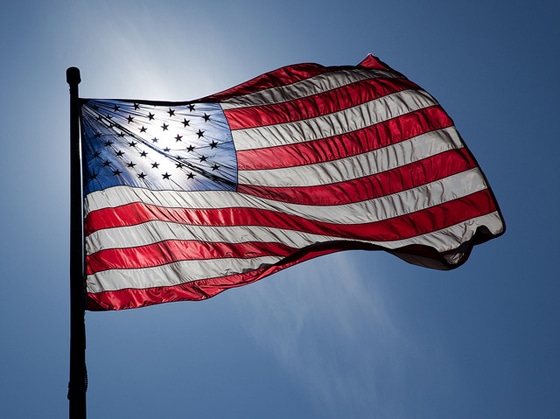Happy Fourth of July from Melaleuca!

10 Fun Facts About Independence Day
Happy Independence Day! The United States of America is 239 years old today!
Melaleuca is a patriotic and military-friendly employer that is proud to call this great nation home. We wish everyone a wonderful Fourth of July filled with family, friends, food, fireworks, and fun.
America was borne out of an idea that “all men are created equal” and that “life, liberty and the pursuit of happiness” were God-given rights. Thomas Jefferson, the principal author of the Declaration of Independence, believed these principles were central to government.
In fact, did you know that when Jefferson first drafted the Declaration, his original preamble read, “We hold these truths to be sacred and undeniable”? That’s right. It was only after he consulted with Benjamin Franklin and Thomas Jefferson that he changed it to the wording we are all familiar with today: “We hold these truths to be self-evident.”
That’s just one of many interesting and fascinating facts about Independence Day. Here are 10 more things you may not have known about this patriotic holiday and the traditions surrounding it:
- The act Congress voted on is called the Lee Resolution. On June 7, 1776, Richard Henry Lee of Virginia proposed a resolution declaring the 13 Colonies as united and independent of Great Britain. It is the adoption or approval of the Lee Resolution that officially formed a new nation.
- “Happy Second of July!” Wait, what? John Adams wrote to his wife, Abigail, that July 2, 1776—not July 4—would become the day Americans forever celebrated as the birth of their nation. Why? Because Congress voted for independence, officially severing ties from Great Britain, on July 2. After two days of debate and revision, the final wording of the Declaration of Independence was approved, and the document was sent to the printer for publication on July 4, 1776.
- New York did not vote for independence. While the 12 other colonial delegations voted in favor of the resolution for independence, New York abstained.
- There is more than one copy of the Declaration of Independence. On the night of July 4, 1776, there were several paper copies printed. These copies are known as the Dunlap Broadside copies, and 26 of them are known to exist today.
- The Declaration of Independence wasn’t signed when you think it was. The 56 delegates who signed the engrossed copy of the Declaration of Independence—the famous copy on parchment which is on display at the National Archives—did not all do so on July 4, 1776. In fact, none of them did. The creation of that copy—which included a new title—wasn’t even ordered by Congress until July 19, 1776. Most of them signed it on August 2, 1776, and the remaining few signed it later.
- It wasn’t always “The Star-Spangled Banner.” Francis Scott Key never wrote a patriotic song, but he did pen a poem called the “Defence of Fort M’Henry.” Key wrote the poem after he witnessed the pounding of Baltimore’s Fort McHenry by the British Royal Navy during the War of 1812. It was later set to music, renamed, and declared the U.S. National Anthem in 1931. Ironically, the tune we sing every Independence Day is a British one: “To Anacreon in Heaven.”
- The “Star-Spangled Banner” had 15 stripes. Most of us know that the 13 stripes on the current U.S. Flag represent the original 13 colonies. We’re also aware that stars have been added for each new state since 1776. However, did you know that at one time we had a flag with 15 stars AND 15 stripes? After Vermont and Kentucky became the 14th and 15th states respectively, two stars and two stripes were added to the flag in 1795. That’s the flag that inspired Key’s poem. When five more stars were added in 1818 for Indiana, Louisiana, Mississippi, Ohio, and Tennessee, it was decided to scrap the additional stripes idea, go back to the original 13 stripes, and just add stars going forward.
- There’s a real “Old Glory.” In addition to being called the Stars and Stripes or the Star-Spangled Banner, the flag of the United States is sometimes referred to as Old Glory. It was given this nickname by 19th-century sailor Captain William Driver. Captain Driver flew a U.S. flag, which his mother sewed and he named Old Glory, from his ship as he sailed around the world. It is now part of the Smithsonian Institution in Washington, D.C.
- We love our fireworks. According to the American Pyrotechnics Association, Americans lit off over 225 million pounds of fireworks—a whopping 201.6 million pounds of consumer fireworks to just 23.7 million pounds of display fireworks—in 2014. The majority of which was lit off last Fourth of July.
- Where is the oldest Fourth of July parade? That distinction goes to Bristol, Connecticut—home to the oldest continual Independence Day Celebration in the country. The folks in Bristol have put on a parade since 1785!

We’ve been watching a DVD series from https://learnourhistory.com/Home.html. The http://www.melaleucajournal.com/happy-fourth-of-july-from-melaleuca/ page shows more detail about July 4, 1776. Learn Our History series covers history from the discovery of North America to at least July 4, 1776 — the DVD that we received and watched yesterday. It appears to be written for an audience of ages 6-16, but interesting and informative for any age. After we’ve watched it we’ll give it to our home-schooled grandchildren.
07.05.2015
thank you very much for enlighted to me about the star spangled banner